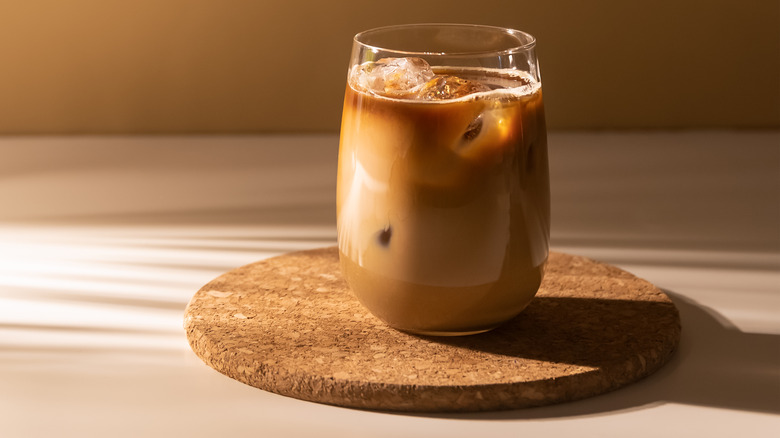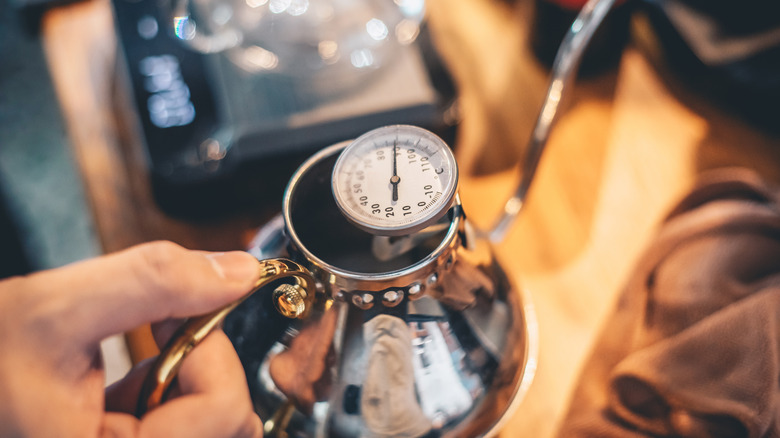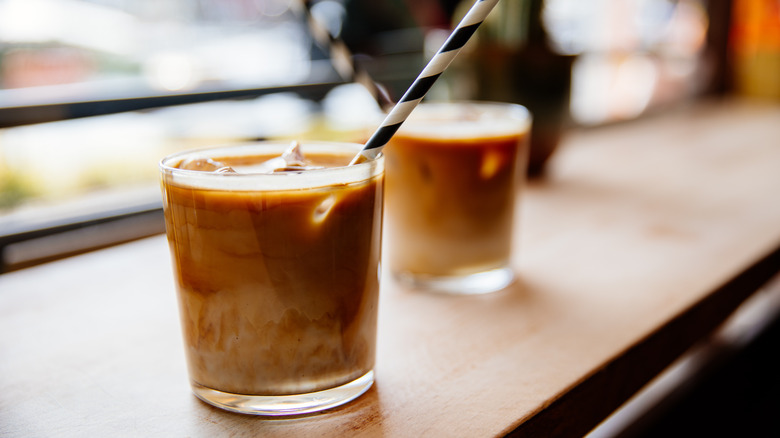The Water Mistake That Can Make Iced Coffee Taste Off
The days of simply grabbing a cup of joe on the run or using pre-ground coffee in a basic drip coffee maker seem to be few and far between. While simplified coffee rituals still exist, the nuances that come with specialty brews are more the norm than an anomaly nowadays. Many people now highly regard the specifics of where beans are sourced, the proper ways to grind them, and how every little detail in brewing matters. That includes one of the primary components of an iced coffee drink: the water.
A typical cup of coffee, hot or iced, is comprised of nearly 99% water, so it stands to reason that the H2O in the java should get the most attention. But that's rarely the case, leading to tragically missed opportunities for a glorious coffee-drinking experience. Water subtleties in coffee-making abound, but one thing in particular can make your coffee taste inexplicably "off" without any obvious explanation: the temperature at which you brew the grounds. If you're using boiling water, that's likely the culprit. Fixing this one mistake with hot water could change your whole coffee game.
Water temperature really matters when brewing coffee
No matter what iced coffee hacks you might use, in the end it's really just brewed coffee served cold or over ice (as opposed to cold brew coffee which results from room-temp water). So, the same principles should apply whether you're drinking it steaming hot or crisp and cold. One big one is the temperature of your water.
Water typically boils at temperatures of 212 degrees Fahrenheit, except in regions with exceptionally high altitudes. Yet, an excellent cup of brewed coffee will happen when applying a lower water temperature. That's because super hot boiling water can scorch the aromatic compounds in coffee beans, resulting in a bitter taste on the tongue. Incorrect brewing temps can also fail to extract the complete range of possible flavors.
To prevent an iced-coffee fail, you'll want to brew grounds with water heated to an ideal range of 195 to 205 degrees Fahrenheit. That's considered part of the Golden Cup Standard of coffee preparation established by the Specialty Coffee Association (SCA). The standard applies from the moment hot water meets ground coffee.
How to control the temperature while making iced coffee
Controlling water temperature is where the real art and science comes into play. There are a few methods, depending on the mechanism you're using to make your coffee. When using a French press, pour-over, or any other method in which you heat the water and control the brew on your own, it's ideal to use a thermometer. A standard kitchen thermometer is reliable for periodically checking the temp as the water slowly heats up, while an infrared laser version conveniently lets you check from a distance. Alternatively, you can purchase an electric kettle with adjustable settings for more convenience.
When brewing with a drip coffee machine, it's crucial to use one that not only reaches the ideal temperature range, but one that also lets the coffee drip long enough to extract the flavors. The brewing temp of water for this type of machine should reach 197.6 degrees Fahrenheit within the first minute and never exceed 204.8 degrees, and it should let coffee grounds percolate for at least four minutes and no more than eight. Those criteria may sound tediously exacting, but many machines are highly technologically-advanced to make the process easier. You can also look for one with an SCA certification to ensure quality.



